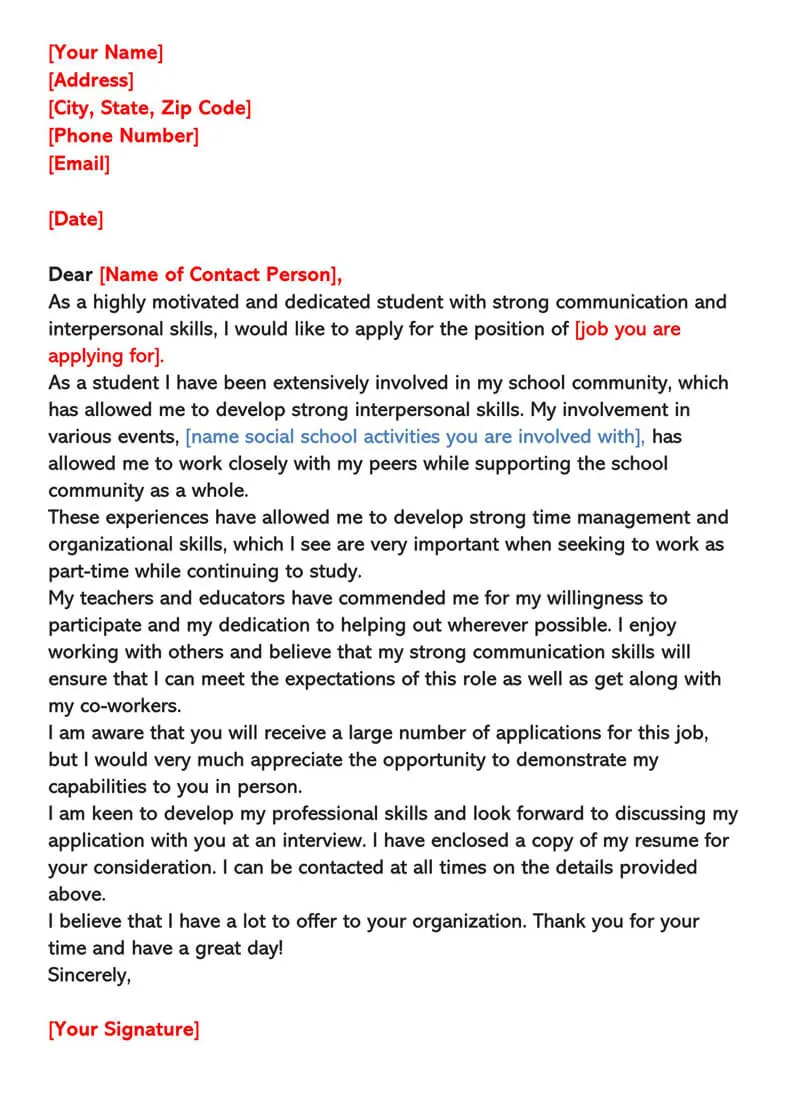Crafting a Cover Letter for Part-Time Student Jobs
As a student seeking a part-time job, a well-crafted cover letter is your key to standing out. It’s your first impression, a chance to showcase your skills, enthusiasm, and suitability for the role. This guide provides a comprehensive approach to writing a compelling cover letter that grabs attention and increases your chances of securing an interview. This is not just a formality; it’s your opportunity to make a strong case for yourself and demonstrate why you’re the ideal candidate. Remember, the effort you put into your cover letter directly reflects your professionalism and commitment.
Understanding the Basics of a Cover Letter
A cover letter complements your resume, providing context and personality. It’s a formal document, so clarity and conciseness are crucial. The primary goal is to express your interest, highlight relevant skills and experience, and encourage the employer to review your resume. Remember to tailor each cover letter to the specific job and company you’re applying to. Generic letters are easily spotted and often discarded. Invest time in researching the company and understanding the job requirements to demonstrate genuine interest and match your qualifications effectively.
Formatting Your Cover Letter Correctly
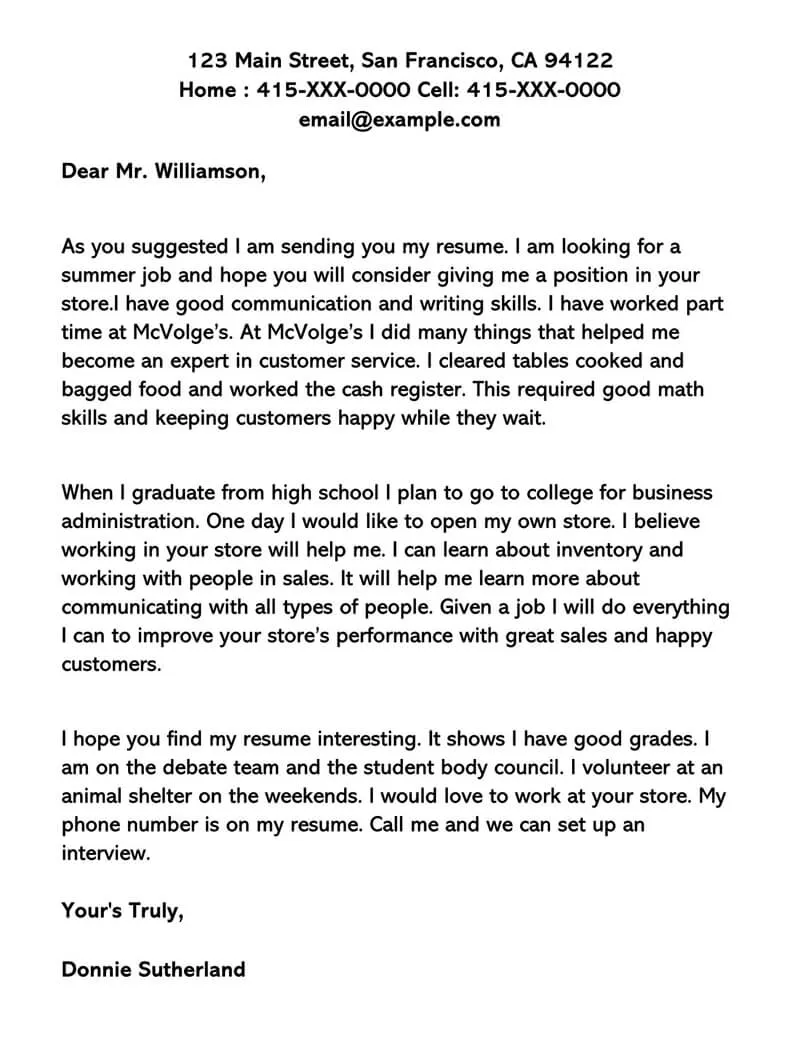
Proper formatting is essential for readability and professionalism. A well-formatted cover letter is easy on the eyes and demonstrates attention to detail. Poor formatting can distract from the content and reflect negatively on your application. Maintain consistency throughout the document, and ensure that the layout is clean and uncluttered. This makes it easier for the hiring manager to quickly scan the document and find the information they need. Proper formatting sets the tone for a positive first impression.
Choosing the Right Font and Size
Select a professional and easily readable font, such as Times New Roman, Arial, or Calibri. The font size should be between 10 and 12 points to ensure legibility. Avoid using overly decorative or unusual fonts, as they can distract from the content. Maintain a consistent font throughout the document, including the header, body text, and closing. Ensure that the font size is appropriate for the overall layout and provides a comfortable reading experience. A clear, professional font choice showcases your attention to detail and professionalism.
Setting Up Your Margins and Spacing
Use standard margins (1 inch on all sides) and single or 1.15 line spacing. This provides enough white space to make the document appear clean and uncluttered. Consistent spacing enhances readability and helps the reader focus on the content. Ensure that there is sufficient space between paragraphs and sections to break up the text and make it easier to scan. Proper spacing is a key element of professional document presentation. Always double-check the formatting before submitting your cover letter.
Writing a Compelling Header
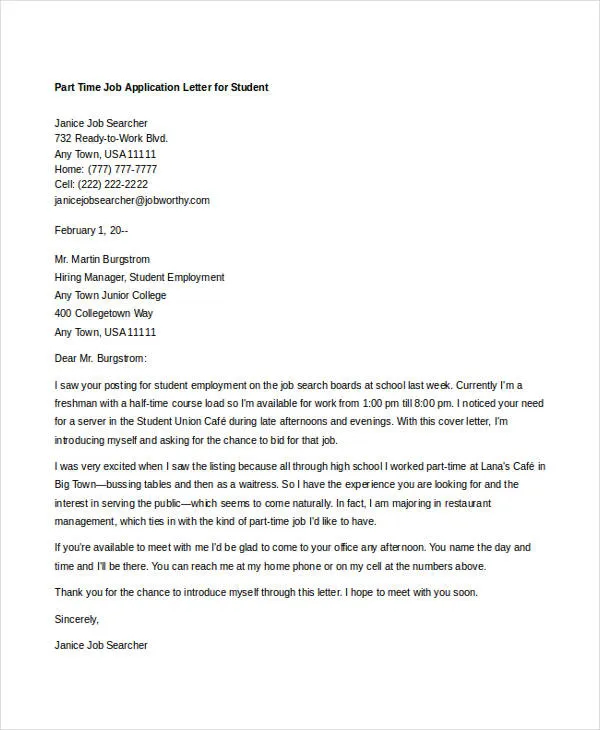
The header includes your contact information, the date, and the employer’s details. Use a professional format and ensure all information is accurate. A well-formatted header provides the necessary information for the employer to contact you and adds a layer of professionalism to your cover letter. Double-check all details, especially the employer’s name and the job title. A mistake here can make a negative impression. Accuracy and clarity are important to show you care about the small things.
Your Contact Information
Include your full name, phone number, email address, and optionally, your LinkedIn profile URL. Make sure your email address is professional. Avoid using nicknames or casual email addresses. This section allows the employer to easily reach out to you for further communication. Ensure your contact information is up-to-date and accurate. Proofread carefully to avoid any typos or errors, so potential employers can reach you immediately.
Date and Employer Details
Below your contact information, include the date and the employer’s details, which usually include the hiring manager’s name, job title, company name, and address. Addressing the letter to a specific person (if possible) demonstrates your research and initiative. If you can’t find a specific name, use a generic title like “Hiring Manager”. This demonstrates your effort and shows that you are detail-oriented. Correctly addressing the recipient is the first step toward making a positive impression.
The Introduction: Grabbing Their Attention
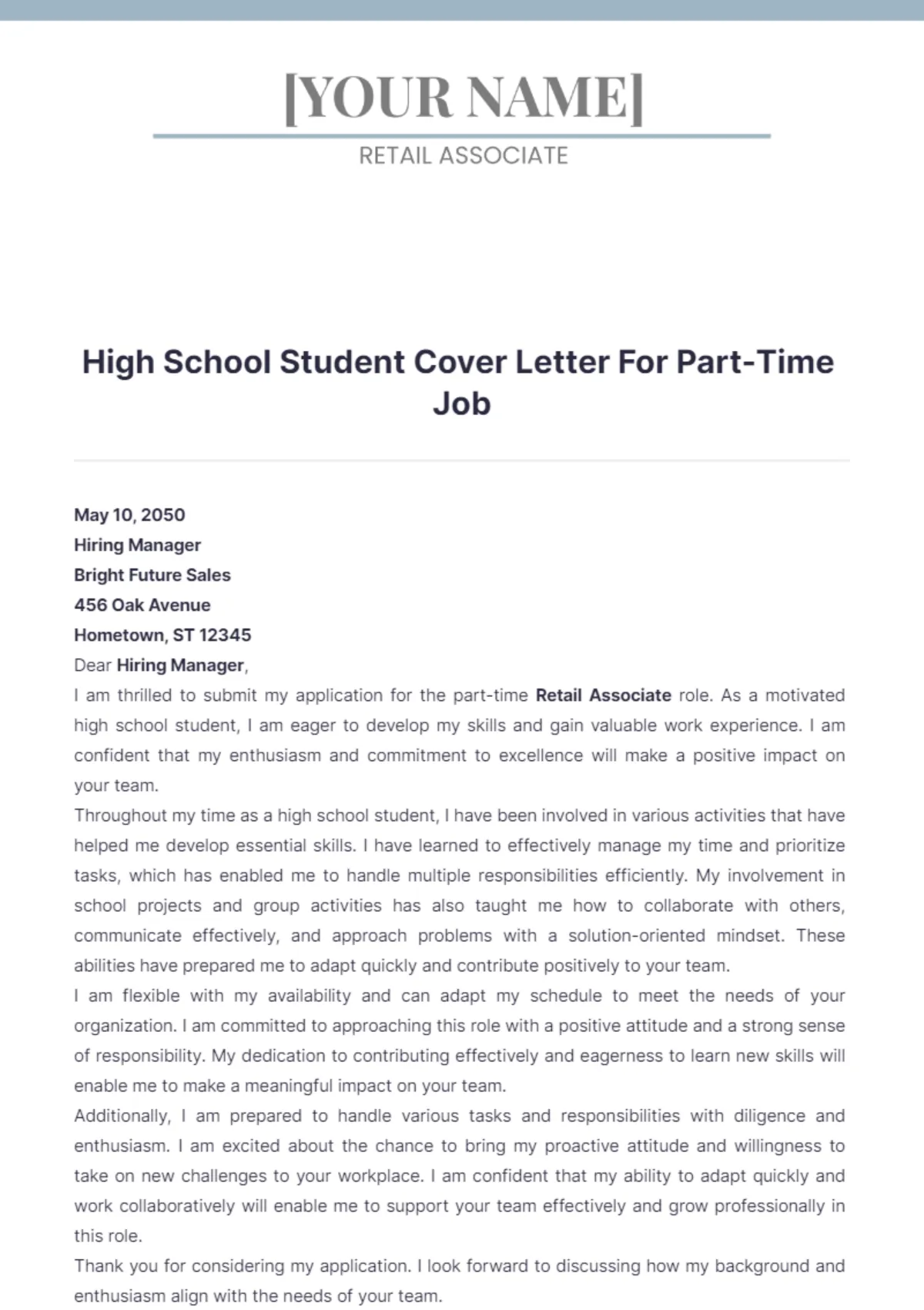
The introduction is the first impression, so it’s essential to make it count. Start by clearly stating the position you are applying for and how you learned about the opportunity. Immediately express your enthusiasm for the role and the company. Tailor your introduction to reflect the specific requirements of the job. A strong introduction captures the reader’s attention and sets the tone for the rest of the cover letter. Be concise, enthusiastic, and show your interest in the opportunity.
Stating Your Purpose and Enthusiasm
Clearly state the position you’re applying for and your excitement about the opportunity. Briefly mention where you saw the job posting (e.g., company website, job board). Demonstrate your knowledge of the company and why you’re interested in working there. Your goal is to make the reader want to learn more about you. Show that you’ve done your research and genuinely want the job. Injecting genuine enthusiasm helps to make you more memorable.
Highlighting Your Skills and Experience
The body of your cover letter is where you connect your skills and experience to the job requirements. Focus on the most relevant skills and experiences that match the job description. Provide specific examples to demonstrate your abilities. Use the STAR method (Situation, Task, Action, Result) to structure your examples, making your accomplishments more impactful. Don’t just list skills; illustrate how you’ve used them to achieve results. Make it clear that you have the necessary skills and a demonstrated track record.
Showcasing Relevant Skills
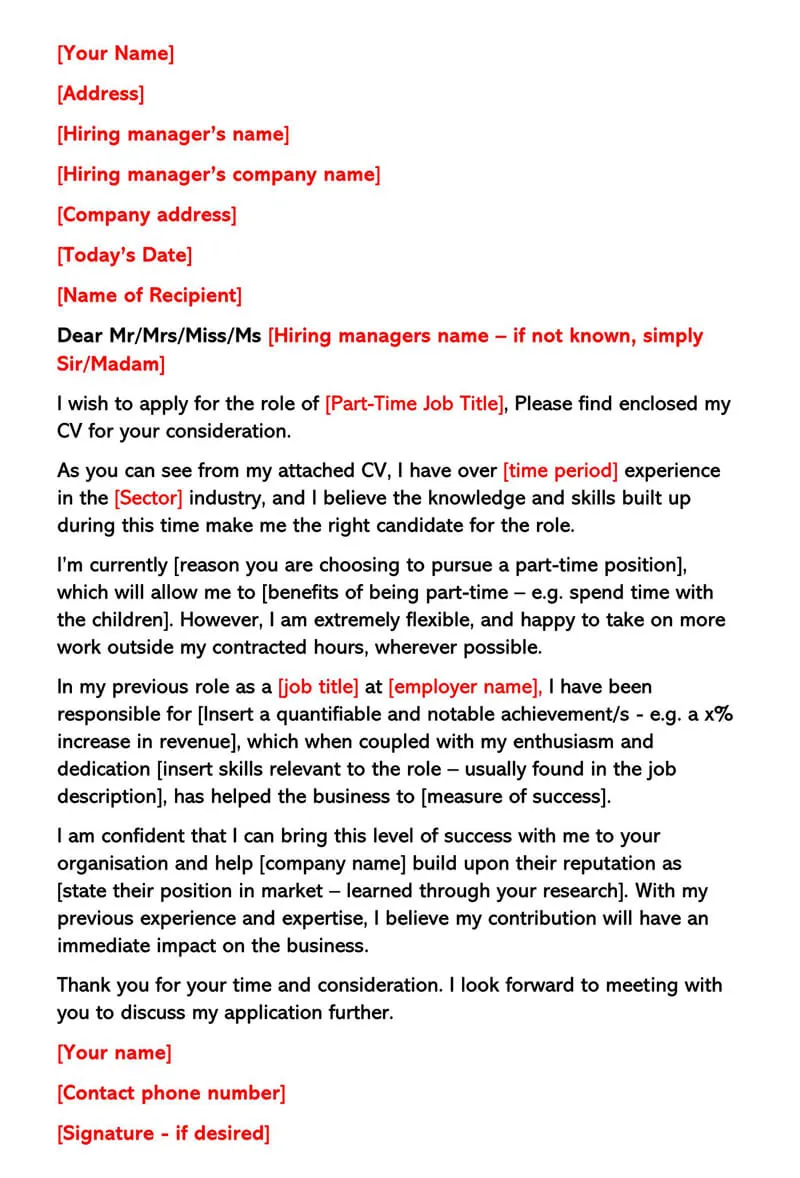
Identify key skills mentioned in the job description and highlight how you possess them. Provide examples of situations where you have used these skills effectively. Use action verbs to describe your accomplishments (e.g., managed, implemented, created). Quantify your skills whenever possible, by using numbers or data to illustrate your achievements. Tailor this section to match the job requirements. Be clear about your key skills and how they apply to the role.
Mentioning Relevant Experience
If you have prior work experience, even if it’s not directly related, connect it to the job requirements. Describe your responsibilities and accomplishments in previous roles. Explain how this experience makes you a suitable candidate for the part-time job. If you are a student with limited professional experience, highlight relevant coursework, volunteer work, or extracurricular activities. Emphasize the skills you gained and how they translate to the job’s requirements. Show how your experiences make you ready for the role.
Quantifying Your Accomplishments
Whenever possible, quantify your accomplishments with numbers or data. For example, instead of saying “Improved customer service,” say “Improved customer satisfaction scores by 15%.” Quantifiable results add credibility and show the impact of your work. Using numbers helps the employer easily understand the value you bring. Be specific and provide data that supports your claims. Demonstrating a clear impact will make your cover letter more compelling. Numbers are a great way to impress the employer.
The Body Paragraphs
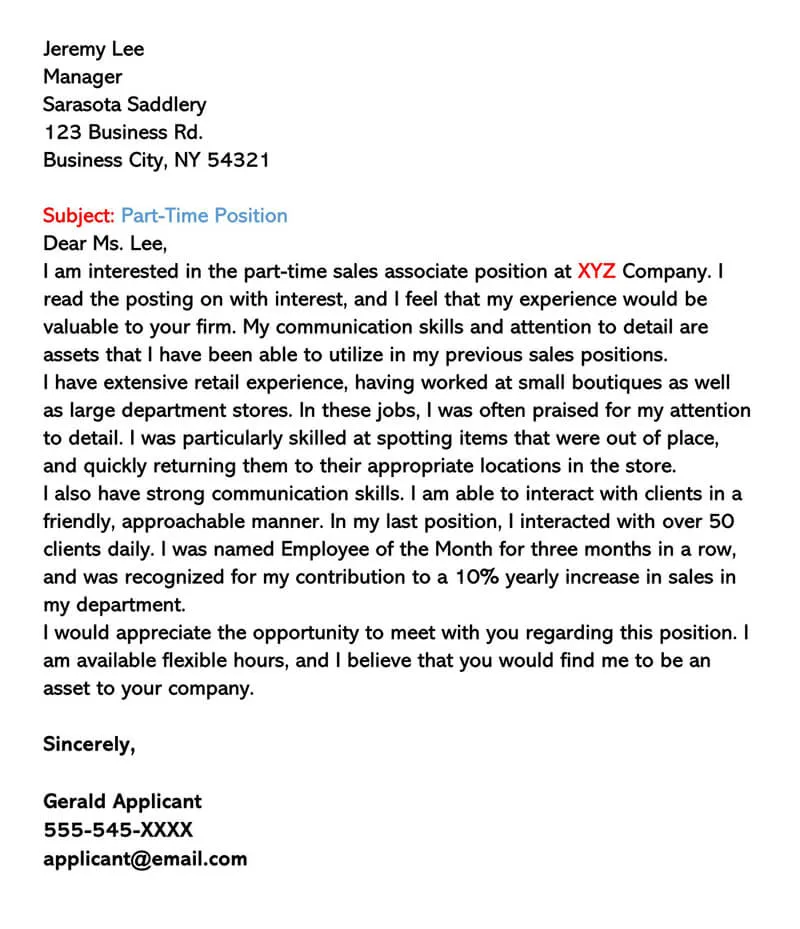
The body paragraphs are where you further demonstrate your skills, experience, and interest in the company. Provide specific examples of your accomplishments and how they relate to the job. Tailor each paragraph to address the specific requirements and expectations of the role. Write clear and concise sentences, and keep the focus on what you can offer the employer. Each paragraph should build upon the previous one to create a cohesive narrative of your qualifications.
Paragraph 1 Tailoring Your Letter
In the first body paragraph, explain why you are a good fit for the specific role. Refer to the job description and highlight skills or experiences that are specifically mentioned. Provide examples of how you have used these skills in the past. Show your understanding of the company’s needs and how you can contribute to their success. Ensure your language is concise and direct. Show the reader that you have the specific qualities they need.
Paragraph 2: Expressing Your Interest
In the second body paragraph, elaborate on your interest in the company and the position. Research the company and mention something specific that excites you about working there. Explain how your values align with the company’s mission or culture. Demonstrate that you are genuinely interested in the company beyond just needing a job. This shows you are a good fit and make the hiring manager more interested in knowing you.
Paragraph 3: Explaining Your Availability

If the job requires specific availability, clearly state your availability in the third paragraph. Provide details about the days and times you are available to work. Be as flexible as possible while also being realistic about your schedule. If you have any constraints, be upfront and explain them. Make it easy for the employer to see that your schedule aligns with the job’s requirements. This is a key practical aspect of the application.
The Closing: Making a Strong Impression
The closing should reiterate your interest, express gratitude, and include a clear call to action. Keep the closing concise and professional. This is your last chance to leave a positive impression, so make sure it reflects your enthusiasm and professionalism. The closing should be friendly and professional, reinforcing your interest and commitment to the opportunity.
Expressing Gratitude
Thank the employer for considering your application. Show your appreciation for their time and attention. Expressing gratitude is a simple way to demonstrate your professionalism and good manners. A sincere thank you can make a positive impact and set you apart from other candidates. A genuine show of thanks can really impress the hiring manager.
Adding a Call to Action
Include a call to action, such as “I look forward to hearing from you” or “Thank you for your consideration. I am available for an interview at your earliest convenience.” Provide your contact information one more time. This encourages the employer to take the next step and shows that you are eager to continue the conversation. Make it easy for them to contact you. A strong call to action ensures they know the next step and keep you in mind.
Proofreading and Editing
Before submitting, thoroughly proofread and edit your cover letter. Errors can undermine your credibility. Taking the time to review your work shows attention to detail and professionalism. It’s always a good idea to have someone else read your letter for a second opinion. Even a minor mistake can detract from your message. Proofreading is one of the most crucial steps.
Checking for Grammar and Spelling Errors
Check for any grammatical errors, spelling mistakes, and typos. Use a grammar checker, but don’t rely on it entirely. Carefully read your letter aloud to catch errors you might miss. Typos and grammatical errors can make you appear careless and unprofessional. Pay close attention to detail and ensure everything is correct. Perfect grammar creates a great first impression.
Ensuring Clarity and Conciseness
Ensure your writing is clear, concise, and easy to understand. Use strong verbs and avoid jargon or overly complex sentences. Remove any unnecessary words or phrases. Your goal is to convey your message clearly and effectively. Keep it brief and to the point. Your cover letter should be easy to read. Clear and concise writing is a sign of a strong candidate.
Common Mistakes to Avoid
Avoid common mistakes that can negatively impact your cover letter. Be aware of these pitfalls to increase your chances of success. Attention to detail and careful preparation are key to avoiding these common errors. This will help make a positive impression.
Generic Cover Letters
Avoid using a generic cover letter that is not tailored to the specific job. Each cover letter should be customized to the particular role and company. Employers can quickly identify generic letters. Show that you’ve done your research and are genuinely interested in the specific opportunity. Generic letters are easily dismissed; customize each letter for the best results. Tailor your letter to the job!
Lack of Proofreading
Always proofread your cover letter before submitting it. Errors in grammar, spelling, or punctuation can make you appear careless and unprofessional. Proofreading demonstrates attention to detail. A mistake-free cover letter is a key part of a positive impression. Before submitting, double-check everything.
Focusing on Yourself Too Much
Focus on what you can offer the employer rather than simply listing your accomplishments. Show how your skills and experience align with the company’s needs and the job requirements. Employers want to know what you can do for them. Frame your experience in terms of how it benefits the employer. Show how your expertise can solve their problems or meet their needs.
